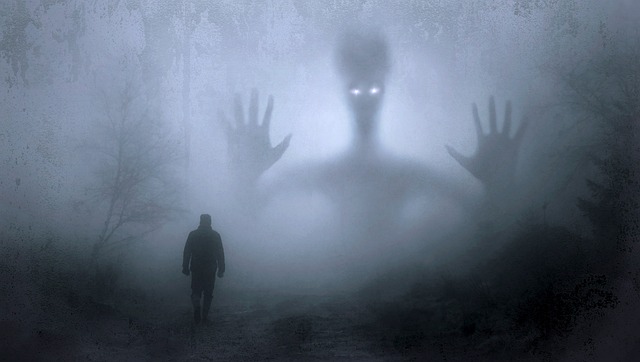Sleepwalking is a behaviour disorder where individuals move around their environment during sleep while having no recall of it the next morning. Night terrors, on the other hand, are a type of parasomnia characterized by intense fear and panic during sleep that may also involve physical movement such as kicking or flailing arms.
What is sleepwalking?
(Image by Thomas from Pixabay )

Sleepwalking is a condition in which a person gets up and walks around while they are asleep. It can happen at any time during the sleep cycle, but it is most likely to occur in the first few hours after falling asleep. Sleepwalking usually lasts for a few minutes, but it can sometimes go on for longer periods of time.
What are night terrors?
(Image by Stefan Keller from Pixabay )

Night terrors are a condition in which a person feels terror during the night. They may cry out or scream, and their heart rate and breathing may increase. Night terrors usually happen in children, but they can also happen in adults.
The difference between sleepwalking and night terrors
There are a few key differences between sleepwalking and night terrors. Sleepwalking usually occurs during the later stages of sleep, while night terrors tend to happen early on in the sleep cycle. Additionally, people who experience sleepwalking typically have no memory of the event afterward, whereas those who have night terrors may remember fragments of what happened. Night terrors are often accompanied by fear or terror, whereas sleepwalking is not.
Causes of sleepwalking and night terrors
- A family history of sleepwalking or night terrors. If you have a parent or grandparent who used to sleepwalk or experience night terrors, you may be more likely to experience them yourself.
- Sleep deprivation. If you’re not getting enough sleep, your body may try to compensate by entering into a deep sleep state, which can sometimes lead to sleepwalking or night terrors.
- Stress and anxiety. If you’re under a lot of stress or have anxiety, this can also lead to sleepwalking or night terrors.
- Certain medications. Some medicines, such as sedatives or antidepressants, can cause sleepwalking or night terrors.
- Medical conditions. There are some medical conditions that can increase the likelihood of sleepwalking or night terrors, such as narcolepsy, seizure disorders, and restless legs syndrome.
Treatment for sleepwalking and night terrors
There are a few things that you can do to help if your child sleepwalks or has night terrors, but it is important to understand that these behaviors are usually out of your control. You should avoid trying to wake your child up if they are sleepwalking, as this can lead to them becoming startled and confused. Instead, try to guide them back to bed gently. If your child is having night terrors, it is best to let them ride it out as they will usually settle down on their own after a few minutes. However, if your child is in distress or appears to be in danger, you may need to intervene. In either case, make sure that the sleeping environment is safe and free from anything that could cause harm.
Prevention of sleepwalking and night terrors
There are several things you can do to prevent sleepwalking and night terrors, including:
- Establishing a regular sleep schedule and sticking to it as much as possible. This means going to bed and waking up at the same time every day, and not taking naps during the day.
- Avoiding stimulants such as caffeine before bed.
- Creating a calm and relaxing environment in your bedroom, free of noise and light pollution. Consider investing in blackout curtains or an eye mask.
- Practicing relaxation techniques such as yoga or meditation before bed.
- Avoiding alcohol before bed, as it can disrupt sleep patterns.
When to see a doctor for sleepwalking or night terrors
Here are some signs that you should see a doctor for sleepwalking or night terrors:
- You are injuring yourself or others while sleepwalking or experiencing night terrors.
- You are experiencing extreme fear or anxiety during sleepwalking or night terrors.
- Your sleepwalking or night terrors are disrupting your sleep or the sleep of those around you.
- You are experiencing other sleep-related symptoms such as sleep apnea, restless leg syndrome, or narcolepsy.
- Your sleepwalking or night terrors are causing significant distress or impairment in your daily life.
- If you are experiencing sleepwalking or night terrors, your doctor may recommend a sleep study or refer you to a sleep specialist. Treatment options for these conditions may include medication, therapy, or lifestyle changes to improve sleep hygiene.
It’s important to note that sleepwalking and night terrors can be more common in children, and in most cases, they will outgrow these conditions as they get older. However, if you have concerns about your child’s sleepwalking or night terrors, it’s always a good idea to speak with their doctor.
What are the symptoms of night terrors and sleepwalking?
Night terrors are a parasomnia disorder that is characterized by screaming, thrashing, and panicked waking from sleep. The individual is usually unresponsive to attempts to console them and may even appear violent. Night terrors typically occur in the first few hours after falling asleep and are more common in children than adults.
There are a few key symptoms that distinguish sleepwalking from night terrors. First, sleepwalkers tend to have their eyes open and look awake, whereas people experiencing night terrors usually have their eyes closed and look asleep. Secondly, sleepwalkers often move slowly and deliberately, whereas people with night terrors thrash around quickly. Finally, sleepwalkers typically remember what happened during their episode, but people with night terrors typically do not.
What’s the difference between night terrors and nightmares?
Night terrors tend to happen during the early stages of sleep, whereas nightmares usually occur during the later stages. Night terrors also tend to be more intense and can last for several minutes, whereas nightmares are typically shorter and less intense. Finally, people who experience night terrors often have difficulty remembering them afterwards, whereas people who have nightmares usually remember them quite well.
Do night terrors affect brain?
It is not known exactly how or why night terrors occur, but they seem to be related to over-arousal of the brain during sleep. Night terrors typically occur in children between the ages of 3 and 8 years old, although they can occasionally happen in adults. It is estimated that night terrors affect about 3-6% of young children.
Night terrors are different from nightmares, which tend to occur later in the night and cause feelings of fear, anxiety, or terror. Nightmares are also more likely to be remembered by the person who experiences them. In contrast, night terrors are characterized by a feeling of panic or terror that may accompany autonomic arousal (e.g., increased heart rate and blood pressure, sweating, pupils dilating) and motor activity (e.g., thrashing around). The person experiencing a night terror may scream or shout, but usually does not remember the event afterward.
How can you tell if someone is sleepwalking?
- They will have a glassy-eyed, vacant stare.
- Their speech will be slurred and they may be difficult to understand.
- They may move slowly and awkwardly, or they may move swiftly and jerkingly.
- They may perform activities that are out of the ordinary for them, such as going to the kitchen and eating food, or leaving the house.
- They will not remember sleepwalking episodes when they wake up.
Do night terrors turn into sleepwalking?
When a person experiences a night terror, they may feel like they are stuck in a nightmare and cannot wake up. However, unlike sleepwalking, night terrors are not associated with any physical activity. Instead, night terrors typically involve a person experiencing fear, panic, or terror while they are asleep. Some people may also scream or shout during a night terror.
What deficiency causes night terrors?
There is no definitive answer to this question as each individual experiences night terrors differently and can be triggered by various factors. However, research suggests that night terrors may be linked to a deficiency in the neurotransmitter GABA (gamma-aminobutyric acid). This substance helps regulate nerve activity in the brain and a deficiency can lead to increased anxiety and excitability, which may manifest as night terrors. If you think you may be suffering from a GABA deficiency, it is important to speak with a medical professional to get an accurate diagnosis and treatment plan.
Featured Image By – Image by kamila_gorecka from Pixabay








